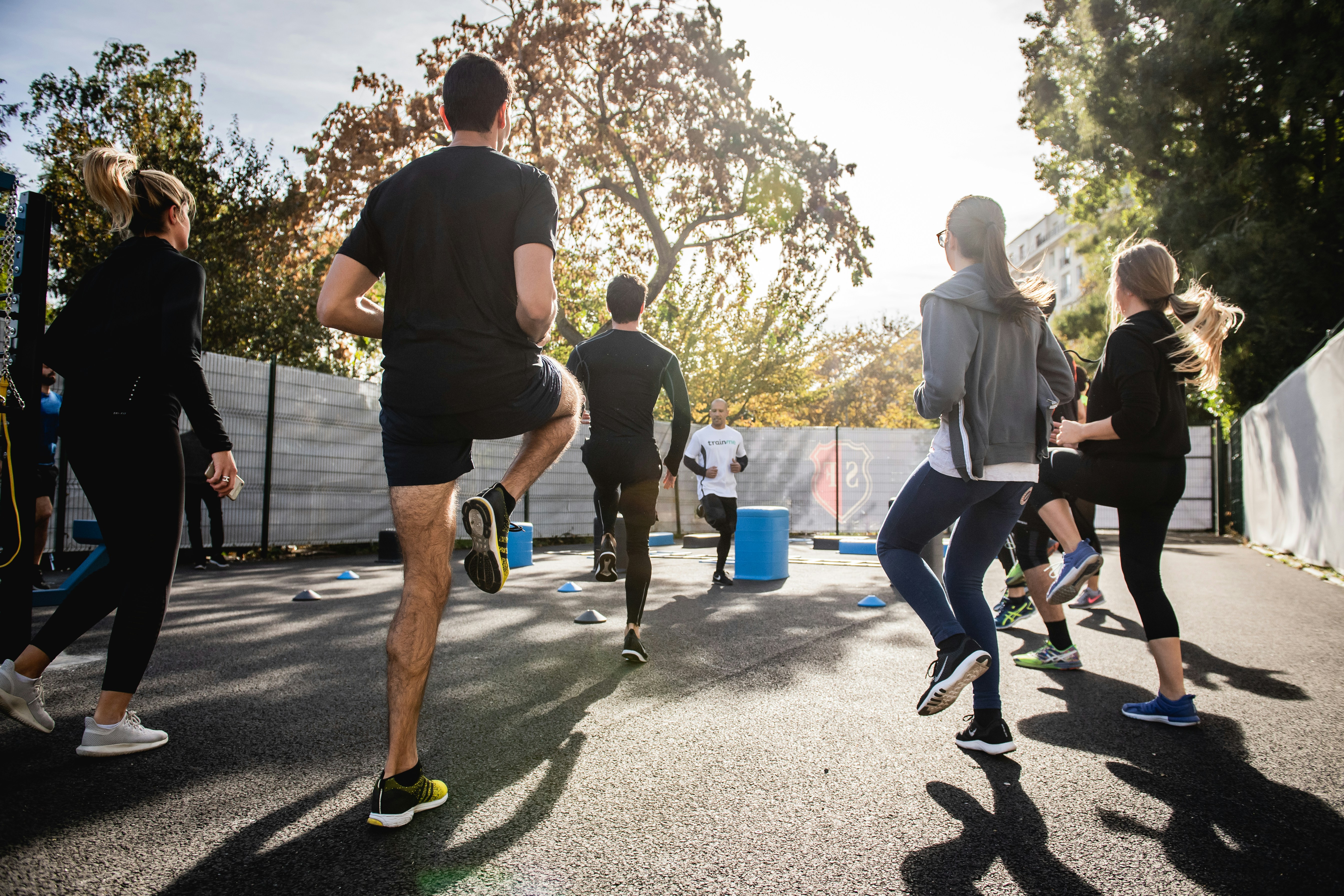The Science of Muscle Growth: How Hypertrophy Really Works

The Science of Muscle Growth: How Hypertrophy Really Works
“Muscles are torn in the gym, fed in the kitchen, and built in bed.” – Unknown
Introduction
Muscle growth, or hypertrophy , is often misunderstood. Some believe lifting heavy weights alone builds muscle, while others focus solely on protein intake. The truth? Hypertrophy is a complex physiological process influenced by multiple factors — mechanical tension, metabolic stress, recovery, and more.
In this article, we’ll explore the science behind muscle growth , debunk myths, and provide practical, evidence-based tips for optimizing your training for hypertrophy.
What Is Muscle Hypertrophy?
Hypertrophy refers to an increase in the size of muscle fibers , not the number of muscle cells. There are two primary types:
- Myofibrillar hypertrophy : Increase in the density and size of the contractile proteins (actin and myosin) — contributes to strength and density.
- Sarcoplasmic hypertrophy : Increase in fluid and energy substrates stored in the muscle — contributes to muscle size and endurance.
Most hypertrophy programs elicit a combination of both types.
The Physiology of Muscle Growth
Muscle hypertrophy is triggered by a process known as mechanotransduction — the conversion of mechanical stress into cellular signals that promote muscle repair and growth.
Here’s how it works:
- Training causes microtrauma in muscle fibers.
- The body responds with inflammation and satellite cell activation .
- Protein synthesis increases to repair and reinforce damaged fibers.
- Over time, this process results in larger, stronger muscles .
📚 Reference : Schoenfeld, B. J. (2010). The mechanisms of muscle hypertrophy and their application to resistance training. Journal of Strength and Conditioning Research , 24(10), 2857–2872.
The Three Key Mechanisms of Hypertrophy
Dr. Brad Schoenfeld, a leading researcher in muscle science, outlines three main drivers of hypertrophy:
1. Mechanical Tension
Generated by lifting progressively heavier loads through a full range of motion.
- Activates mechanosensors in muscle fibers
- Stimulates satellite cell proliferation and protein synthesis
2. Muscle Damage
Occurs when muscle fibers undergo stress beyond their accustomed load.
- Triggered by eccentric movements (e.g., lowering phase of a lift)
- Causes inflammation and activates repair processes
3. Metabolic Stress
The “burn” or pump feeling caused by the buildup of metabolites like lactate and hydrogen ions.
- Enhances cellular swelling
- Releases anabolic hormones (e.g., IGF-1)
🧪 Most effective training plans include all three mechanisms in varying degrees.
Progressive Overload: The Cornerstone of Muscle Growth
To grow, muscles must be challenged beyond their current capacity . This principle is called progressive overload .
Ways to apply progressive overload:
- Increase weight
- Increase reps or sets
- Decrease rest time
- Improve time under tension
- Enhance range of motion
Without overload, your body adapts and plateaus .
Training Variables That Influence Hypertrophy
1. Repetition Range
The “hypertrophy range” is often cited as 6–12 reps per set.
- Heavy loads (3–6 reps): Best for strength and myofibrillar growth
- Moderate loads (6–12 reps): Optimal for overall hypertrophy
- Light loads (15–20+): Can still cause growth if taken to failure
2. Training Volume
Defined as sets × reps × weight . Volume is a major determinant of hypertrophy.
- Beginners: 10–15 sets per muscle group/week
- Intermediates: 15–20+ sets/week
🎯 More isn’t always better. Excessive volume can lead to fatigue and overtraining.
3. Rest Periods
Shorter rest (30–90 sec) increases metabolic stress; longer rest (2–3 min) supports heavier lifts.
Use rest strategically:
- Compound lifts: 2–3 min
- Isolation exercises: 30–90 sec
4. Training Frequency
Training a muscle 2–3 times per week is more effective than once a week.
Splits can include:
- Upper/Lower
- Push/Pull/Legs
- Full Body 3x/week
Nutrition: Fueling Growth
Muscle building requires caloric surplus and adequate protein .
Macronutrients:
- Protein : 1.6–2.2g per kg of body weight/day
- Carbs : Replenish glycogen and support training
- Fats : Support hormones like testosterone
Meal Timing:
- Post-workout nutrition (20–40g protein + carbs) supports recovery and growth
- Spreading protein across 3–5 meals improves muscle protein synthesis
🥩 Best sources of protein: Chicken, eggs, whey, fish, Greek yogurt, tofu, legumes
Recovery: Where the Growth Happens
Training stimulates growth, but recovery enables it.
Essentials of Recovery:
- Sleep : 7–9 hours/night is non-negotiable
- Rest days : Allow muscles to repair and adapt
- Hydration : Water supports nutrient delivery and joint health
- Active recovery : Walking, yoga, or light cycling can aid blood flow
⚠️ Overtraining can increase cortisol, impair recovery, and stall progress.
Supplements That May Help (But Aren’t Required)
- Creatine monohydrate : Enhances strength and cell volumization
- Whey protein : Convenient post-workout protein source
- Beta-alanine : Buffers lactic acid, helps endurance
- Omega-3s : May reduce inflammation
Supplements are tools — not magic. Focus on training, nutrition, and consistency first.
Common Hypertrophy Mistakes to Avoid
🚫 Lifting too heavy with bad form
🚫 Skipping progressive overload
🚫 Training too infrequently
🚫 Neglecting compound movements
🚫 Ignoring recovery or sleep
🚫 Inconsistent nutrition or low protein intake
Muscle building is a marathon, not a sprint. Patience and discipline win .
Sample Hypertrophy Program (4-Day Upper/Lower Split)
Day 1 – Upper Body (Push Focus)
- Bench Press – 4 x 8
- Overhead Press – 3 x 10
- Dumbbell Flys – 3 x 12
- Triceps Dips – 3 x 10
- Lateral Raises – 3 x 15
Day 2 – Lower Body
- Back Squat – 4 x 8
- Romanian Deadlift – 3 x 10
- Walking Lunges – 3 x 12 each leg
- Calf Raises – 3 x 20
- Plank – 3 x 60 seconds
Day 3 – Upper Body (Pull Focus)
- Pull-ups or Lat Pulldown – 4 x 8
- Barbell Rows – 3 x 10
- Face Pulls – 3 x 15
- Bicep Curls – 3 x 12
- Shrugs – 3 x 15
Day 4 – Lower Body (Glutes/Hamstrings Focus)
- Deadlifts – 4 x 6
- Bulgarian Split Squats – 3 x 10
- Glute Bridges – 3 x 15
- Seated Hamstring Curl – 3 x 12
- Russian Twists – 3 x 20
Final Thoughts
Muscle growth is more than lifting weights — it’s a deliberate combination of training, recovery, nutrition, and consistency. Understanding the science of hypertrophy can help you train smarter, avoid frustration, and make steady gains.
You don’t need to be perfect — just intentional . Lift with purpose. Eat to nourish. Rest to grow.
“You don’t grow by chance. You grow by choice.”
References
- Schoenfeld, B. J. (2010). The mechanisms of muscle hypertrophy and their application to resistance training. Journal of Strength and Conditioning Research , 24(10), 2857–2872.
- Phillips, S. M. (2014). A brief review of critical processes in exercise-induced muscular hypertrophy. Sports Medicine , 44(1), 71–77.
- Morton, R. W., et al. (2016). A systematic review, meta-analysis, and meta-regression of the effect of protein supplementation on resistance training–induced gains in muscle mass and strength. British Journal of Sports Medicine , 52(6), 376–384.




